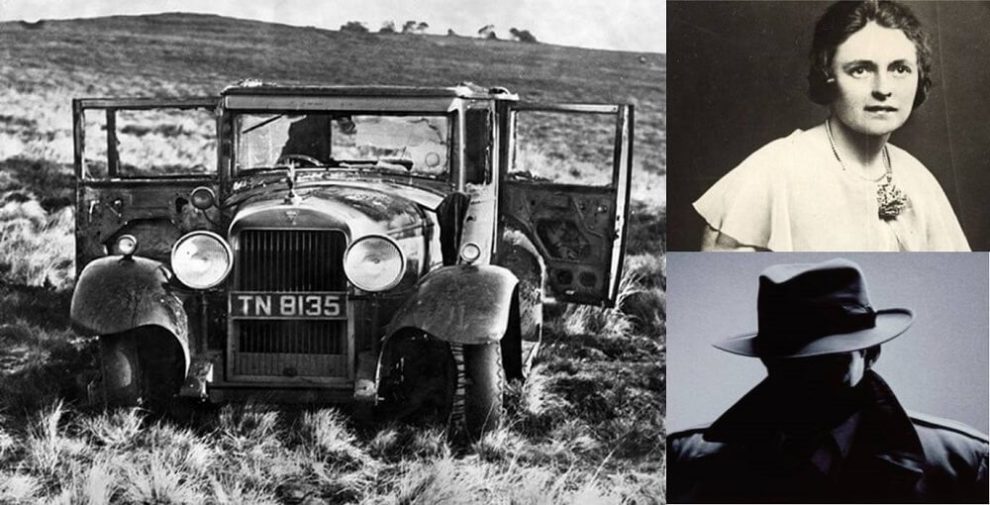“A charismatic Alaskan businessman named Joseph Tarricone with ties to Hawaii, Seattle and Albuquerque, vanished in the latter months of 1978. He was last seen at the home of a former girlfriend who lived at 10324 Canyon Road in Puyallup, Washington.”
In 2007 the discovery of human bones in the backyard of a house in Puyallup, Washington opened up a 30-year-old case and exposed the dark past of the man responsible. Complex family dynamics and an infatuated businessman ended in a murder that was covered up and remained hidden for three decades, buried in the grounds of the house on Canyon Road.
In Tarricone: A Death On Canyon Road, author Gary Leon Zimmer traces this case back to its roots. Presenting a book that takes a closer look at the backgrounds, relationships, and actions of the individuals involved, Zimmer gives justice to Joseph Tarricone, a man who lost his life in a brutal act of violence for simply being in love.
Joseph Tarricone was a successful 51-year-old businessman who was able to live a lavish lifestyle and enjoy the products of his hard work. Zimmer describes him as charismatic, with “the most compelling personality and the tandem of genuine warmth and a total absence of hostility or arrogance gained him friends wherever he went.”
His meeting with a young woman at a lounge bar he often frequented in Alaska in 1976 would change the course of his life. Tarricone fell deeply in love with 24-year-old Renee Curtiss and enjoyed a short-term relationship with her, where he showered her with expensive gifts and gave her a well-paid job in his company. Renee’s mother, Geraldine Hesse, wanted her daughter to accept Joseph Tarricone’s proposal of marriage. This was a rich man who could provide for their family for many years to come. Renee however, strong-willed and independent, didn’t want marriage and she distanced herself from the besotted Tarricone. She returned his gifts, got another job away from his company, and moved from Alaska to Washington, taking her mother and daughter with her.
“The events that took place in a three-bedroom home with a basement on Canyon Road in Puyallup, Washington, in late September of 1978, a home occupied by Geraldine Hesse, her granddaughter Nicolle and her daughter Renee, would involve bullets and a chainsaw.” – Gary Leon Zimmer
In order to unravel this complex case, Zimmer has unearthed the history of the Hesse family. In particular that of Nicholas Notaro, the adopted son of Geraldine Hesse and brother of Renee Curtiss, who grew up fiercely protective of his mother and sisters, a trait which would later lead him to murder. Early chapters provide this background and lay the foundations for the criminal events that are to come.
In these early sections, the narrative in places is a little disjointed with a lack of dates to place events and some inconsistent organization of material confusing the timeline. Sections within chapters are headed with the names of the individuals being discussed which was not always successful in translating the jump in timeline or focus, leaving some areas appearing fragmented. However, the story being told grabs attention and encourages perseverance to reveal how these individuals became entwined and how their personal stories ended.
By 1978, Renee, her mother, and her daughter were living in the rental house in Canyon Road and Joseph Tarricone had not been deterred by the distance between himself and Renee. With his son living in Seattle, each time he visited he would also visit Renee and once again propose marriage. In late September 1978 after one of these visits, Joseph Tarricone disappeared. He stopped contacting his family, didn’t arrive for work, and left no clue as to where he might have gone. Despite desperate searches by his family, Joseph Tarricone remained listed as missing as his case went cold.

Gary Zimmer has taken time to explore the details of the discovery of Joesph Tarricone’s remains 29 years later in 2007, and trace the path which led the lead detective to Nicholas Notaro’s door. In his first interviews with police in relation to Tarricone’s death, Notaro told them it was his mother Geraldine who had shot and killed the businessman, laying the blame at the feet of a woman who had died in 2000 and was unable to defend herself.
He soon retracted this statement and told a different story. “Nobody had to tell me to kill him.” He told the police. “We went down to the basement, and when he leaned over, I shot him in the back of the head. I shot him twice.”
“I gave the head to my mother to get rid of separately. I put the arms, legs and torso in bags. We buried them in the garden.” – Nicholas Notaro
Nicholas Notaro was a violent man with a sinister criminal history, and Joseph Tarricone was not his first victim.
Vicki Lea Snyder married her husband believing he was a good man. He repaid her with two gunshots just 10 days before he used the same gun to take the life of Joseph Tarricone. By the time he was connected to Tarricone’s murder, he had spent 7 years in jail for the murder of his wife Vicki Lea, and faced two criminal trials relating to child sexual abuse.
Part III of Tarricone is where this book really comes into its own. Charting the criminal murder trials of both Nicholas Notaro and his sister Renee Curtiss, Zimmer’s writing is engaging with a much more natural flow as the trials play out in blow-by-blow detail. Gary Zimmer attended both trials and is able to provide accurate details of both the proceedings and the legal questions which were being examined. The timeline is clear providing a fluid and clean narrative enabling the reader to become fully absorbed in the events as they happened.
In the trial of Nicholas Notaro in February 2009, Zimmer writes of Notaro’s defense attorney “She contends he had not killed Joseph but chose to offer himself as the killer, hoping to prevent the possibility of the women, one or all of whom might be guilty, being charged with the crime.” Notaro’s confessions to police, however, made in his early interviews were used by prosecutors’ again and again during his trial pointing to his responsibility and guilt for the murder. For Renee Curtiss, whose trial commenced one month later, the question for the jury was whether she was guilty of being her brother’s accomplice or entirely innocent of all involvement.
Notaro testified for his sister in March 2009. “I told Mom and Renee that we could go get a chainsaw and cut him up,” he told the court. Words that did not reach far enough for the jury to believe his sister was innocent.
Both Notaro and Curtiss eventually paid the price for their crime and the truth about what happened to Joseph Tarricone after so many years came to light. For his family, who spent decade after decade at a loss at his disappearance, his betrayal at the hands of the women he loved was a difficult truth to comprehend. In telling this story, author Gary Zimmer has given insight into the tangled relationships of the Hesse family, the overbearing protective arm of Nicholas Notaro and the life of the victim, Joseph Tarricone, alongside providing an intricate account of the criminal system in action in finally achieving justice.
Tarricone: A Death On Canyon Road
by Gary Leon Zimmer
REVIEW SUMMARY

In 1978 a wealthy businessman went missing after being last sighted at a house on Canyon Road in Puyallup, Washington. Three decades later the discovery of human bones at that same house broke open a gruesome murder and a family secret, kept hidden year after year. Gary Leon Zimmer attended the murder trials of Nicholas Notaro and his sister Renee Curtiss in 2009 taking details notes as they were both convicted of the murder of Joseph Tarricone and jailed for life. In Tarricone: A Death On Canyon Road, he tells the full story of this case, tracing the histories of those involved and the complex interactions that ended in murder. In a book that is stronger in the second half than the first, Zimmer provides an engaging narrative on this true crime. He is respectful of the victim Joseph Tarricone in telling his story as well as the individuals who took his life. For true crime fans and those with an interest in cold cases, Tarricone is an enjoyable and insightful read on a fascinating case.
Prefer Audiobooks? Audible 30-Day Free Trial with free audiobooks.












































Hello Fiona Guy–Whenever I type that name I immediately think of Fiona on Shameless! However, to the task at hand….you reviewed this book and gave it a 3.5 rating. Because of your review I made changes in the book and other reviews (since I’ve started promoting the book) are coming in much higher than that ….how do I get you to give the changed book a higher rating?
Not asking for an inaccurate review…a falsely laudatory review…asking for an accurate review because of the changes made….
Thanks! Gary Leon Zimmer ‘Tarricone: A Death on Canyon Road’
Hi Gary, that sounds great about changes and updates to your book. I’d be more than happy to take a look and update the review for you with my thoughts. I will email you and we can get that arranged!
Hello, once again Fiona! The above issue of your 3.5 review still looms. Did I submit the book to you for a 2nd review? Another question, do you still have information from the first review that would allow a comparison of the book after I made changes?
Your offer to ‘take a second look’ and update the review is still of interest to me…thanks!
Gary (Tarricone: A Death on Canyon Road)
Hey Gary, lovely to hear from you! I’ll email you and we can get this going. I’d be delighted to take a look at the updated book and update the review!